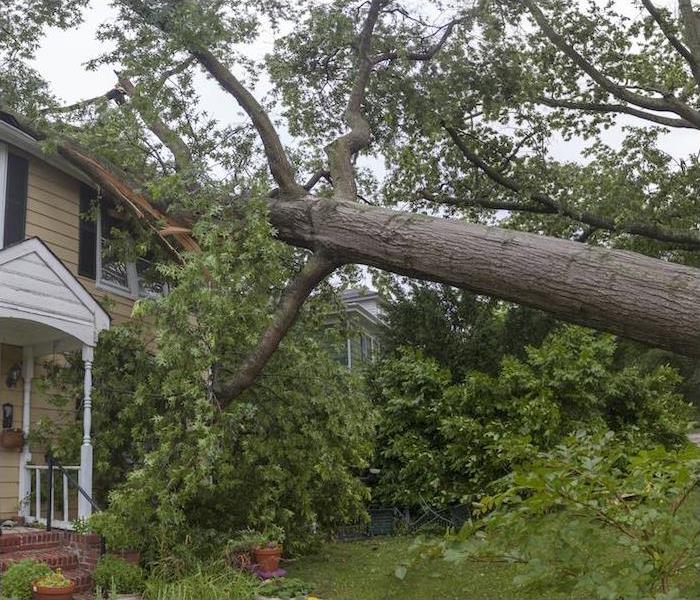Tree Hazards Are a Serious but Overlooked Storm Danger
12/13/2021 (Permalink)
 When storms cause issues, we make it our priority to make things right again. Contact SERVPRO of Fayette/S. Fulton today.
When storms cause issues, we make it our priority to make things right again. Contact SERVPRO of Fayette/S. Fulton today.
There’s an assailant in your yard. An attacker, or possibly even a gang of them—a gaggle of malfeasants waiting for the right moment to strike.
We’re talking, of course, about your trees. Sure, they look innocent enough—they mostly stand around, though occasionally they may wave. But they’re waiting on a signal, ready to cause damage to your property or your home with a strong wind or a bolt of lightning.
Storm-related tree damage is a very real threat, and yet it’s something we often don’t prepare for well. 2020 alone saw more than 16,000 reports of damage from thunderstorm winds, and many of those were downed trees. Severe thunderstorms and extreme weather events often carry winds upwards of 60 miles per hour, which is enough to down a tree.
But of course, you love your trees and the shade, oxygen and beauty they provide, and you wouldn’t want to see them gone. So let’s look at what you can do to avoid potential damage to and from them in a heavy storm.
A hazard tree is much more likely to fall or break in heavy wind or storms. If you can see that a tree is a risk, you can take action to have it dealt with on your own terms, before a storm strikes.
Check the trunk. Some signs of decay are observable. Wood can weaken as it ages, and decaying tree tissues become inflexible and are prone to breakage. You may see external signs such as seams, cracks and dead, stubby branches, which can indicate decay inside the tree. You may also notice cankers or wounds, which grow in size over time and make a tree more likely to fail.
Check the crown. Irregularly shaped treetops, such as lopsided ones or crowns with v-shaped forks, may be signs a tree is unhealthy and likely to fail in a storm. Trees that lean more than about 15 degrees should be removed, as that kind of lean indicates the uprooting process may have already begun.
Check the roots. If your tree’s roots aren’t healthy, you don’t have a healthy tree, period. The more root damage your tree has, the more likely it is to come up out of the ground under heavy wind or strain. Dwarfed tree growth, off-color leaves and thin crowns can all be outward signs of unhealthy roots.
The danger of any of these hazards is increased if a tree is hanging over your roof, vehicle or other property, because a fall would cause much more damage. There are treatments and prevention methods you can try if you notice an unhealthy tree in the yard, but it’s best to take care of it as soon as possible, to minimize the chance that it could fall and cause harm.
When storms cause issues, we make it our priority to make things right again. Contact SERVPRO today to get help 24⁄7 in emergencies.




 24/7 Emergency Service
24/7 Emergency Service